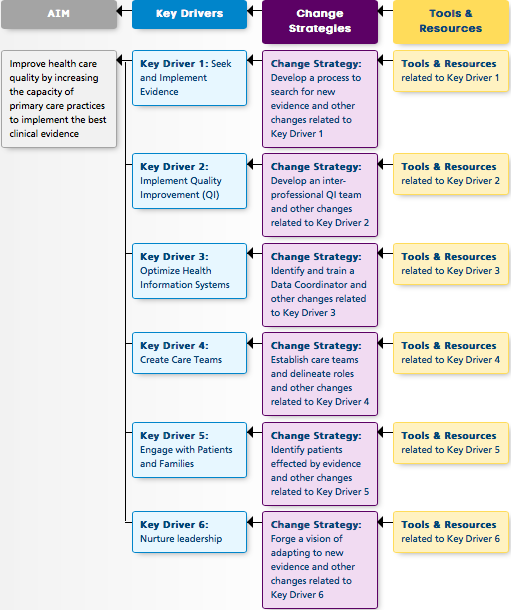By Cindy Brach, Senior Health Care Researcher, Agency for Healthcare Research and Quality (AHRQ)
The Healthy People 2020 initiative includes objectives to improve heart health through prevention, detection, and treatment of risk factors. You can learn how to advance these objectives — as well as objectives related to other topics — by visiting EvidenceNOW Tools for Change, a curated collection of more than 100 tools and resources designed to help primary care practices improve quality by providing evidence-based care.
EvidenceNOW, an initiative of the Agency for Healthcare Research and Quality (AHRQ), used practice facilitation with more than 1,500 small- and medium-sized primary care practices nationwide to help them adopt evidence-based practices for heart attack and stroke prevention. AHRQ learned a great deal from EvidenceNOW about what it takes for practices to successfully implement evidence.
In order to share what we’ve learned, we teamed up with the EvidenceNOW cooperatives and national evaluators — as well as the practice facilitators who directly coached EvidenceNOW practices — to develop a quality improvement framework. The framework consists of 6 big changes, or key drivers, that will help practices increase their capacity to use evidence. The changes include:
- Seek, select, and customize the best evidence for use by the practice
- Implement a data-driven quality improvement process to integrate evidence into practice procedures
- Optimize information systems to extract data and support use of evidence in practice
- Create and support high functioning teams to deliver high-quality evidence-based care
- Engage patients and families in evidence-based care and quality improvement
- Nurture leadership and create a culture of continuous learning and evidence-based practice
For each key driver, there’s a set of change strategies. But it’s not enough to know what needs to change. Practices need to know how to make the changes. So we asked EvidenceNOW grantees to nominate tools and resources that they found most successful in helping practices with the EvidenceNOW strategies. The AHRQ EvidenceNOW team also identified tools and resources that emerged from years of quality improvement initiatives. AHRQ staff and external experts in primary care improvement pored over hundreds of nominations to select the best options.
In Tools for Change, you’ll find tools — ranging from basic to complex — to help implement each of the change strategies. An example of a simpler tool is the one-page workflow diagram designed to help medical assistants identify patients with heart disease who are not receiving aspirin when it’s indicated. At the other end of the spectrum is the Facilitator’s Primary Care Toolkit to Improve Heart Health, which provides checklists, action plans, and other resources to guide primary care practices in implementing evidence-based guidelines and transform the delivery of heart health care. And Tools for Change is not limited to improving heart health — you’ll find many tools that can improve primary care practices’ capacity to implement evidence on any topic.
Practices with experience in quality improvement activities will be able to search Tools for Change and implement strategies on their own. But many practices — especially smaller practices like those who participated in EvidenceNOW — may require assistance from practice facilitators or other quality improvement specialists. The Tools for Change resource also includes a section for practice facilitators that offers a wide variety of tools designed to help them support practices. If you want to keep up with new developments in the field of practice facilitation, you can sign up for AHRQ updates — be sure to select “Practice Facilitation in Primary Care” under “Quality and Patient Safety.”




